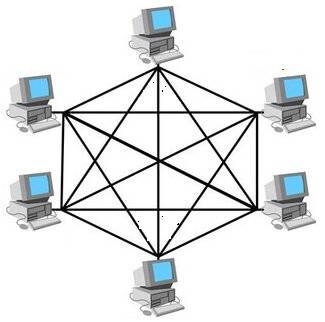What is Mesh Topology?
Have you ever wondered how devices in a computer network are able to communicate with each other and transmit data? The answer is network topology. Network topology refers to the arrangement of cables, nodes, and other components that make up the network. One of the most common types of network topology is the Mesh Topology. In this type of topology, nodes on a network are interconnected to one or more nodes directly, forming a mesh-like structure.
Table of Contents (TOC)
- What is Mesh Topology?
- What are the Different Types of Mesh Topology?
- How Does Data Transmission Work in Mesh Network Topology?
- What are the Disadvantages and Advantages of Mesh Topology?
What is Mesh Topology?
Mesh topology is a type of network topology where devices are interconnected to multiple other devices, forming a mesh-like structure.
The devices or nodes in this topology connect dynamically, directly, and non-hierarchically to as many other nodes as possible. This generates multiple pathways for data transmission between devices, enhancing fault tolerance and redundancy.
You can also explore: Types of Transmission Media In Computer Network.
Mesh topology is usually used in large institutions or enterprises as it can handle significant data traffic and be easily expanded. Apart from that, it is also used in wireless networks, like wireless mesh networks and wireless sensor networks (WSN).
Best-suited Networking courses for you
Learn Networking with these high-rated online courses
What are the Different Types of Mesh Topology?
There are two types of Mesh topology:
- Full Mesh Topology
- Partial Mesh Topology
Full Mesh Topology: In this type of mesh topology, every node (computer, router, switch, etc.) in the network is connected to every other node. If there are n nodes, each node will have an n-1 number of connections.
To calculate the total number of connections, you can use this formula: n(n-1)/2. If there are ten nodes, the total number of connections will be: 10(10-1)/2 = 45.
This design ensures that data can be routed through multiple alternative paths to reach its destination if a single connection fails.
Partial Mesh Topology: In this type of mesh topology, every node in the network may not be connected to every other node. Compared to full mesh topology, it is less costly and provides basic redundancy to control the failure of any nodes. The partial mesh topology is used in peripheral networks that work with a full mesh backbone in tandem.
How Does Data Transmission Work in Mesh Network Topology?
In mesh network topology, data transmission works differently than in other network topologies. When you send data from your device, it can take different routes to reach its destination, depending on distance, traffic congestion, and link quality. The routing algorithms in the network determine the best path for data transmission. Here's the diagram of mesh topology:
One of the unique features of mesh network topology is that data can be forwarded through intermediate devices if a direct connection between two devices is unavailable. This ensures that data packets reach their intended destination, even if there are obstacles or other issues that may hinder direct transmission.
What are the Disadvantages and Advantages of Mesh Topology?
Here are the disadvantages of Mesh topology:
- Many wires and complex configurations make setting up and maintaining a mesh network harder.
- Adding devices gets expensive and complicated fast, making large networks challenging.
- Keeping all those devices running uses more power and requires more maintenance, costing you more.
- Fixing problems is trickier because there are many connections to check.
- Setting up a mesh network costs more upfront than other options.
Here are the advantages of Mesh topology:
- Even if one connection breaks, the network keeps sending data through other paths.
- The network chooses the fastest and clearest path for your data, making it run smoothly.
- Data travels directly between devices, making it harder for others to see it.
- You can easily add or remove devices without messing up the whole network.




FAQs regarding Mesh Topology
Are there any routing protocols that are specifically designed for mesh network topology?
Yes, there are routing protocols designed explicitly for mesh networks, such as the ad hoc on-demand distance vector (AODV) routing protocol and the optimized link state routing (OLSR) protocol. These protocols help manage the routing of data packets in a mesh network and ensure efficient communication between devices.
Is it possible to combine mesh network topology with other network topologies?
Yes, you can combine mesh network topologies with other topologies, such as star. By doing so, you create a hybrid network that provides much more flexibility and can help to optimize the network to meet specific requirements.
Can you show me a diagram of mesh topology to help me understand how devices in a computer network can be connected?
Here's a mesh topology diagram:

Anshuman Singh is an accomplished content writer with over three years of experience specializing in cybersecurity, cloud computing, networking, and software testing. Known for his clear, concise, and informative wr... Read Full Bio







